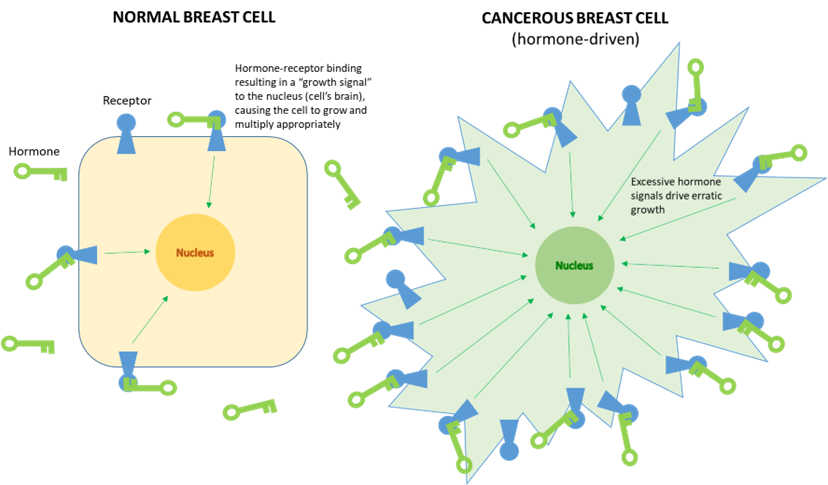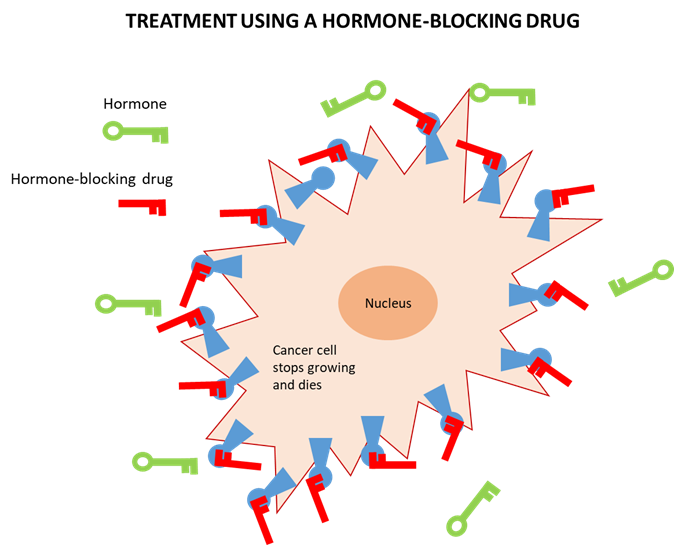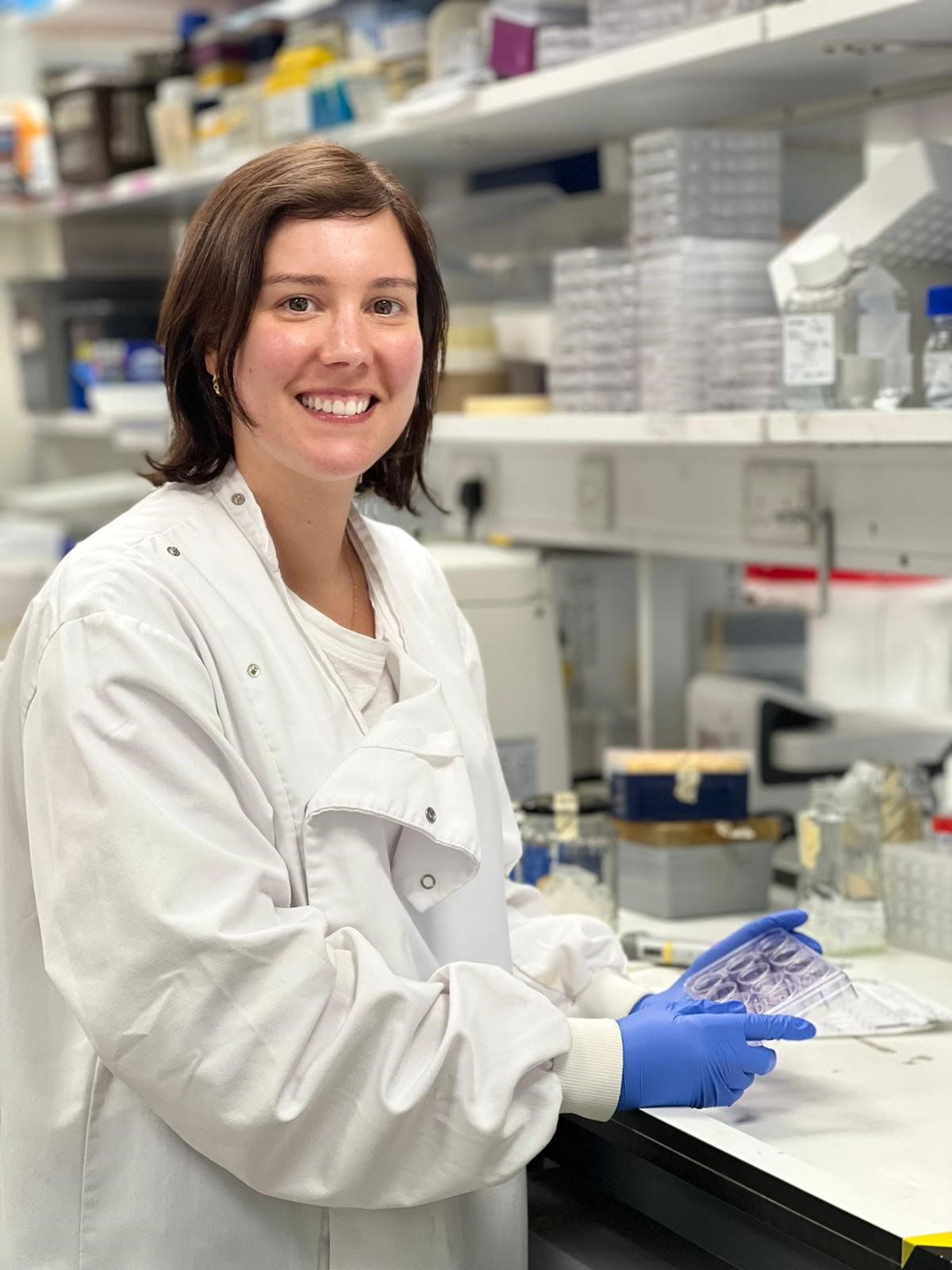Meet the Experts
Incidence and Mortality
Breast cancer affects and kills more women than any other cancer. Clinicians diagnose over 50,000 breast cancers in the UK every year, representing 1 in 7 women. However, with funding and research efforts, more and more treatments are developed and it is becoming a very treatable cancer. In Northern Ireland, it accounts for 30% of cancer in women.
Like all cancers, breast cancer occurs when DNA mutations accumulate in a cell, causing it to grow abnormally and then multiply uncontrollably. There are some risk factors for breast cancer, such as older age or family history, but many occur without a specific cause, which makes it hard to predict a significant amount of cases. While this is typically a disease of older women – most frequently diagnosed between the ages of 50 and 70 – it can affect much younger women too.
Breast Cancer Sub-types and Treatment Options
A cell can become cancerous in any part of the breast, and in general, the type of tissue it arises from determines the nature of the cancer. Cancer cells that arise from parts of the breast that respond to hormones will typically possess abnormalities in the respective hormone-response pathways. For example, the breast glands produce milk in response to the hormone oestrogen. Often, breast cancers arise when these cells become extra sensitive to oestrogen, and they will grow more than they should in the presence of this hormone (diagram 1).
<
Diagram 1. Hormone-driven breast cancer. Hormones have specific receptors on the cell’s surface to which they can bind (like a lock and key) to induce a growth signal. An excess of receptors on a breast cell causes increased growth signalling, leading to abnormal cell growth and the development of a cancerous cell.
This very specific growth signal, however, provides a treatment opportunity: the dependency on this hormone provides the option to block the hormone (key) binding to the cell receptor (lock), by using an alternative and similar “key” (an inhibitor). Tamoxifen is one example of an oestrogen receptor-blocking drug.
If breast cancer cells instead grow in response to other frequently hijacked hormones, then again these can be used for specific treatments, such as Antiprogestins for cancers that depend on the hormone progesterone, or Trastuzumab for cancers that activate growth following activation of HER2 receptor (Her2+ cancers).
These specific drugs that affect specific molecules or receptors are called “targeted therapies”, as they exert their function on a specific “target” that was identified as the source of the tumour growth (diagram 2).

Diagram 2. Targeted inhibition of hormone-driven breast cancer. The drug mimics the hormone, but with a higher affinity for the receptor, and exerting an inhibitory effect. The drug can therefore out-compete the hormone and switch off the growth signalling to starve the cancer cells.
Triple-Negative Breast Cancer
It is important to note that some breast cancers do not have any oestrogen, progesterone or HER2 receptors and they are thus described as “Triple-Negative” or perhaps “Basal Like” (diagram 3). This sub-type frequently affects women under 40 years old and disproportionately affects people of African and Hispanic descent.
Some Triple-Negative breast cancers have deficiencies in a DNA-repair protein called BRCA1, these tumours can be considered for treatments that exploit their defective DNA repair (such as the drug Olaparib). If the tumour does not have BRCA1 mutations, then Triple-Negative patients receive chemotherapy alone, which in many cases is effective.

Diagram 3. Triple-Negative breast cancer cells do not have the receptors for oestrogen, progesterone or HER2, and therefore the receptor-targeting drugs will not affect them. We need a better understanding of the unique signalling that occurs in this subset of breast cancer.
Chemotherapy is a term used referring to different drugs (chemicals) used for the treatment of cancer. While some may be more effective in eliminating cells of certain cancer types, they are not specific, or “targeted”. Chemotherapy works by exploiting features that cancer cells have, such as a fast rate of growth. Doctors often prescribe chemotherapy in combination with targeted therapy, and this can help to destroy all the cancer cells. For example, many breast cancer patients are prescribed Anthracyclines or Platinum chemotherapy drugs that cause forms of DNA damage; normal cells can repair the damage, but cancer cells are usually defective and cannot. However, chemotherapy can have off-target effects on healthy organs. For example, side effects can occur with cell types that also grow rapidly, such as hair follicles and bone marrow, which can lead to hair loss and immune suppression. Targeted treatments are therefore preferable due to their increased specificity.
Breast Cancer Research at JCRC
Kienan Savage's group focuses on DNA damage response and repair, most recently with a focus on DNA damage mediated immune responses. The group wants to understand how to use current available therapies to boost the immune systems response against the cancer. Together with the group of Stuart McIntosh, the aim is to establish new tests capable of identifying patients who will respond to specific treatments, as well as define new combinations of therapies that will benefit patients for which a personalised approach is still lacking.
Cristina Branco models the processes allowing breast cancer metastasis, and what factors may increase risk and vulnerability to develop secondary breast cancer, to better pre-empt, prevent and treat this condition.
While breast cancer affects primarily women, men also have breast tissue, and several hundred males are diagnosed with this condition in the UK every year. Nick Orr, in collaboration with Prof Laura Ottini (Sapienza University of Rome) leads a multinational consortium to investigate the genetic traits underlying male breast cancer, which continues to be very poorly understood.
The research lead by Dr Paul Mullan focuses primarily on Triple-Negative tumours that have not responded to chemotherapy. Dr Mullan’s team is also involved in the development of blood tests for the earlier detection of breast cancers, which will help clinicians to diagnose breast cancer at the early stages, when it is easier to treat.
Dr Mullan is the NI lead on a recently funded HEA grant for the establishment of an All-Ireland Cancer Liquid Biopsies Consortium (CLuB).
Tissue/surgical biopsies are the current procedures used for diagnosing solid tumours but they are invasive, costly and often their effectiveness is limited by issues such as tumour heterogeneity. Increasing evidence from multiple groups worldwide indicate that substantial information originating from tumours enters the bloodstream, giving rise to the potential for “liquid biopsies”. The Mullan group are a key component of the All-Ireland Cancer Liquid Biopsies Consortium (CLuB’s), funded by the HEA North-South Research Programme. This consortium will initially focus on the development of liquid biopsy diagnostic tests for 3 cancer types, including breast cancers, which represent “unmet needs”: difficult to treat cancers such as those that typically are associated with younger patients (i.e., triple-negative breast cancer/TNBC) or that present at an advanced stage (i.e., ovarian cancer and non-small cell lung carcinoma).
The Mullan team have a strong track record in circulating tumour DNA extraction and methylation analysis, predominantly in breast and ovarian cancers. As part of CLuB, they identify novel blood markers released from tumours, with the ultimate aim of developing minimally invasive diagnostic tests, allowing for the earlier and more accurate diagnosis of these aggressive cancer types.
Contributors: Dr Zoe Angel, with edits by Dr Paul Mullan.


